#even toed ungulates
Text

Banteng (Bos javanicus)
Also known as tembadau, this species lives in the tropical forests and grasslands of Southeast Asia. The individual shown here is female; males are a much darker brown. Though they are endangered in the wild, they have also been domesticated, and are used for meat across Southeast Asia. The bull featured on Indonesia’s national emblem is actually a banteng!
#markhors-menagerie#animal facts#animals#biology#fun facts#ungulates#even toed ungulates#ruminants#bovidae#Bovini#banteng#tembadau
467 notes
·
View notes
Text
Uncharismatic Fact of the Day
Finding food in the Arctic tundra can be difficult. Fortunately, reindeer have a special trick to help keep them fed: they can see ultraviolet light! While snow reflects most UV light, other, more edible things like lichens appear black; this makes them easy to spot against the white background.
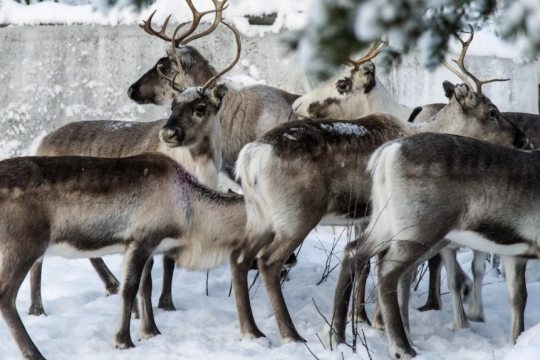
(Image: A herd of reindeer (Rangifer tarandus) by Malin Moberg)
If you send me proof that you’ve made a donation to UNRWA or another organization benefiting Palestinians, I’ll make art of any animal of your choosing.
#reindeer#Artiodactyla#Cervidae#New World deer#true deer#deer#even toed ungulates#ruminants#mammals#uncharismatic facts
109 notes
·
View notes
Note
horses are wacky. you know how most ruminants like cows and sheep have four-part stomachs that help them digest grass? apparently horses have a one part stomach like ours but it's their *large intestine* that's split into four compartments with their equivalent of an appendix being this huge side branch of the gut. what even is the difference
and apparently cetaceans are even toed ungulates which means that a deer and a humpback whale are more closely related than a deer and a horse
Yeah odd and even toed ungulates have different digestive set ups, and I talk about odd toed ungulate digestive efficiency here as well!
And yeah cetaceans are even toed ungulates, and are specifically part of Cetancodontamorpha, which is a family comprised of members with absolutely zero chill such as hippos, entelodonts, Andrewsarchus, and the aforementioned whales. It’s my favorite ungulate family.
#ask#questions#anon#anonymous#biology#even toed ungulates#odd toed ungulates#cetaceans#hippos#whippomorpha#Cetancodontamorpha#ungulate#ungulates
6 notes
·
View notes
Text

she is working on her garden 🌱 🐖
17 notes
·
View notes
Text
Orcas are dolphins, which are whales, which are even-toed ungulates, which are fish, which are archaea
2 notes
·
View notes
Text
Animal practice 24

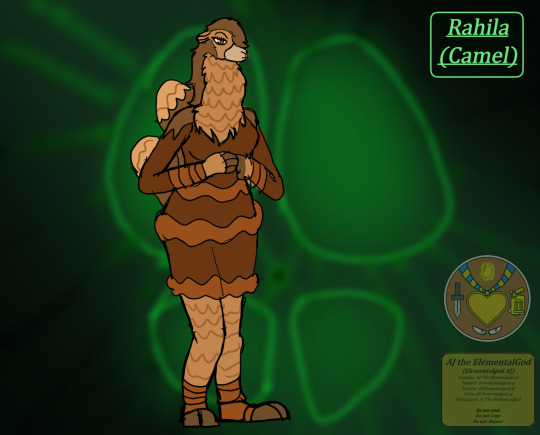





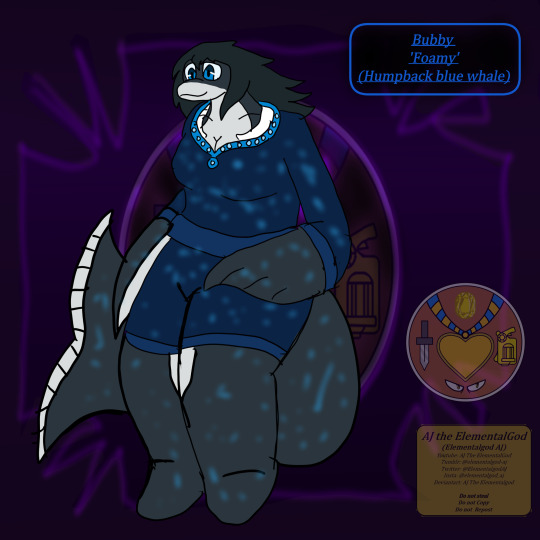
Mammal 10
Ungulates 2
Even toed Ungulates 1
Tylopoda
Poco (llama/Guanaco/Alpaca/Vicuña)
Rahila (Camel)
Suina
Darcy (Peccary)
Bruce (Pig/Hog)
Hippopotamidae
Whoopee (Hippopotamus)
Shorts (Pygmy hippopotamus)
Cetacea
Benjamin (Narwhal/Beluga)
Kacela (Dolphin/Orca)
Glomar (Sperm whale)
Bubby (Blue/Humpback whale)
#the watchful eye#watchful eye#my art#my oc#my ocs#elementalgod aj#aj the elementalgod#isle 0#toonverse oc#o'kong family#anthro allies#neo demons#earthdemons#Ungulates#even toed ungulates#Llamas#camels#peccary#pig#hog#hippopotamus#pygmy hippo#narwhal#beluga#dolphin#orca#sperm whale#blue whale#humpback whale#mammals
2 notes
·
View notes
Text

Red Forest Duiker (Cephalophus natalensis)
Family: Cattle Family (Bovidae)
IUCN Conservation Status: Least Concern
A tiny species of forest-dwelling antelope (growing to only around 43cm/16.9 inches tall at the shoulder,) the Red Forest Duiker is native to south-eastern Africa where it mainly inhabits dense high-altitude or coastal forests with reliable year-round access to freshwater. While many grassland-dwelling antelopes live in large herds to provide "safety in numbers" in the absence of sheltered areas in which to hide from predators, this species' densely-vegetated habitat renders defensive group-living unnecessary (with the small bodies and plain brown colouration of adult Red Forest Duikers allowing them to easily blend in with their surroundings,) and as such they typically live alone outside of breeding or raising calves (although small groups of up to 3 individuals, often close relatives, are occasionally seen foraging together.) Both males and females of this species are highly territorial, using strong-smelling secretions produced by glands beneath their eyes to mark out territories, typically choosing areas with good access to water, food (which consists mainly of fruits, flowers and soft leaves, as compared to other antelopes they have only a rudimentary ability to digest tough, fibrous plant matter) and vegetation to hide within; when faced with potential predators (such as Leopards, Crowned Eagles and Southern African Rock Pythons,) Red Forest Duikers will initially freeze in place in hopes that they have not been seen, and if the predator then begins to approach they will rush towards the undergrowth in a series of short bounding leaps. Female Red Forest Duikers may breed at any time of year, giving birth to a single calf at a time after a gestation period of around 8 months. The calf is protected and fed by its mother for around 6-8 months before reaching maturity, and while its father will not aid in its raising it may remain in contact with it and its mother through a series of snorts, whistles and shrieks - in response to their young calf's distress call, both parents have been known to rush in to defend their young.
--------------------------------------------------------------------------
Image Source: https://www.inaturalist.org/taxa/1431002-Cephalophorus-natalensis
#Red Forest Duiker#Duiker#Duikers#Antelope#antelopes#zoology#biology#mammalogy#mammal#mammals#animal#animals#wildlife#African wildlife#ungulate#ungulates#even-toed ungulates
124 notes
·
View notes
Text

(I dont actually dislike odd-toed ungulates this goddamn meme has just been bouncing around my brain for days)
#that being said even-toed ungulates are my favourite of the two skdds how can you compete with cetaceans and goats#hashtag uhh#even-toed ungulates#i guess? idk man#not tagging odd toes i know better than to spread negativity in tags#after the incident
2 notes
·
View notes
Text

Ossabaw Island Hog. Washington, DC. 2009
19 notes
·
View notes
Text
Sitting here, thinking daemon thoughts because I’m on a run, and namely size stuff. Because every time somebody says something about “well the world wouldn’t have to be much different because most people settle as animals smaller than humans” the only thing that crosses my mind is “well duh they do”.
Let me explain there. Most people are going to settle as animals smaller than a human, because even if we assume an even spread of Settled forms across the animal kingdom, the vast majority of animals are smaller than a human. In fact one of the common definitions of ‘megafauna’ boils down to “vertebrates the size of or bigger than a human”. You’re just not likely to get sizes like that in land critters. Aquatics it’s more likely, but anybody with an aquatic daemon too large to carry is going to be in special circumstances anyway and probably live on rivers and large bodies of water as a general rule, so you’re not likely to be running into them or designing buses and buildings with them in mind.
My point being, when people say “well it’s unusual to Settle as something bigger than a human” it’s said like it’s some form of magic, like “the universe conspires to ensure most daemons stay at a manageable size” when the truth of the matter is, there’s just not that many options for critters big enough to be an inconvenience. I mean, for comparison, there are 28 extant species of crocodylian. Meanwhile you’ve got 59 extant species of hornbill alone. That’s over double the number just there.
So yeah, most people are gonna Settle as something smaller than themselves, but it’s unlikely it’s because the universe sat down when the first ancient relatives of humans were gaining sapience and went “gonna have to make sure the daemons these creatures are starting to develop don’t Settle as anything too big, or at least try to” and more likely that it has everything to do with more species being on the smaller end than the other way around.
#just- for another comparison#the order artidactyla- containing all the even-toed ungulates who are normally a good size?#*including* the whales?#about 270 species#the order rodentia- mice hamsters squirrels beavers etc?#2276 species listed on wikipedia#it's a numbers game
11 notes
·
View notes
Text

(( I am not just saying this out of a desire for goat cheese, by the way.
#Most secret royal advisor || OOC#The rumor mill || Dash Commentary#Bony eared Assfish || Crack#(( its only One of the reasons#(( meanwhile miranda wants more even toed ungulates to bite bite bite bite
3 notes
·
View notes
Text

†Sinomegaceros pachyosteus
Art credit: RudolfHima
Sinomegaceros was another genus of recently extinct giant deer, this one found in Asia, including Tajikistan and Japan. The species shown here, S. pachyosteus, lived in China until about 12,000 years ago.
#markhors-menagerie#animal facts#animals#biology#fun facts#palaeontology#prehistoric animals#ungulates#even toed ungulates#ruminants#deer & kin#deer#sinomegaceros
131 notes
·
View notes
Note
So, I don't know who to ask this...
It occurred to me that bison used to be *Very* populous, and that they migrated, and crossed rivers to do so.
So, extrapolating from Africa, we have a vast water born bounty, floating downstream. What took advantage of this?
I am guessing wolves, bears, fish, birds.... In Africa there are crocodiles. Who sometimes get very little food the rest of the year.
Did alligators come north?
Are alligator Snapping Turtles big enough to feast for a while year(, or just pack on weight while the food lasted.)
Can that be one reason they get so darn big?
Has anyone else thought of this?
Hi there! This is a really interesting question, although the answer might not be what you think.
You're correct that, in Africa, there are crocodiles that regularly take advantage of larger prey like antelope and zebra as they attempt to cross rivers. However, all these rivers are major bodies of water, like the Nile, the Okavango Delta, or the Congo river. They're big, so they provide enough room for crocodiles to compete for food and mates, and attract a lot of prey via migration and the necessity of drinking. These rivers are also ideal temperatures for crocodiles, who are cold-blooded and need to bask in the sun to maintain their body temperatures.
In North America, there aren't many rivers that meet those qualifications. There are some alligators in the southeast end of the Rio Grande, where it runs into the Gulf of Mexico, but father north both it and the Colorado River are too cold for big reptiles. Other rivers that cross bison country are both too cold and too small. Alligator snapping turtles do have a mean bite, but they aren't nearly big enough to bring down a bison-- some of the largest have weighed over 100kg (close to 300lbs) but the average adult bison weighs at least 300kg (something like 700 lbs). The range of bison and alligator snapping turtles also don't overlap much; snapping turtles live generally east of the Mississippi River, while bison live to the west of it. So unfortunately there weren't really any big aquatic predators of bison.
However, wolves, cougars, and bears will all hunt bison, especially the old, young, or sick. Another important predator for bison were people: in fact, some historians believe now that the 'vast seas of bison herds' were actually a result of the decline of Native American populations due to disease and conflict with colonizers, which then allowed the bison population to spread unchecked.
#american bison#Artiodactyla#Bovidae#bovines#even toed ungulates#ungulates#mammals#alligator snapping turtle#Testudines#Chelydridae#snapping turtles#turtles#reptiles#american alligator#nile crocodile#Crocodilia#Crocodylidae#Alligatoridae#crocodiles#alligators#crocodilians#north america#africa#answered#asks#jack speaks
28 notes
·
View notes
Note
I used to be afraid of the toilet when it flushed
SAME but specifically public toilets when they made a that baby crying sound. Home toilets are ok
1 note
·
View note
Text

wip. whatever
#the ponies in the boiling isles are even toed ungulates and all have those tiny horns to do magic#different types of ponies are more adept at different magics like earth for beast keeping and plant and healing#yknow#okay.
0 notes
Text
Animal practice 25
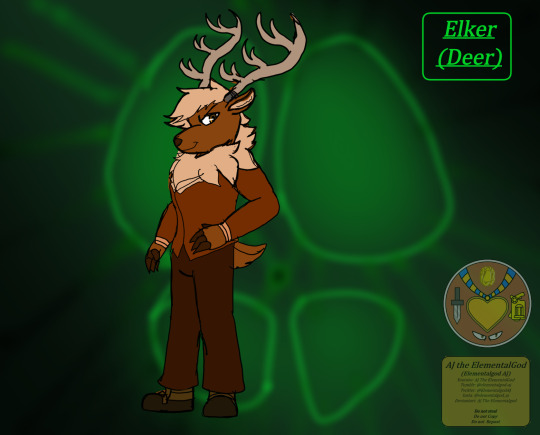


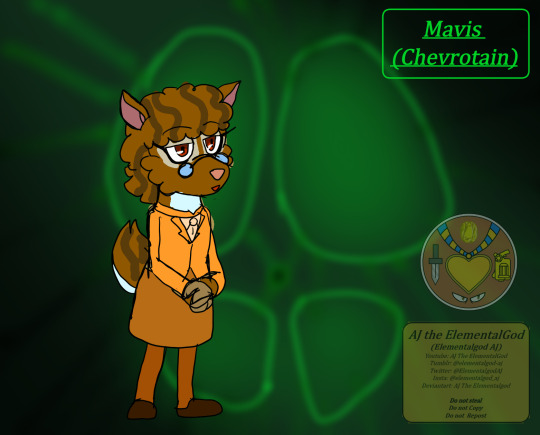
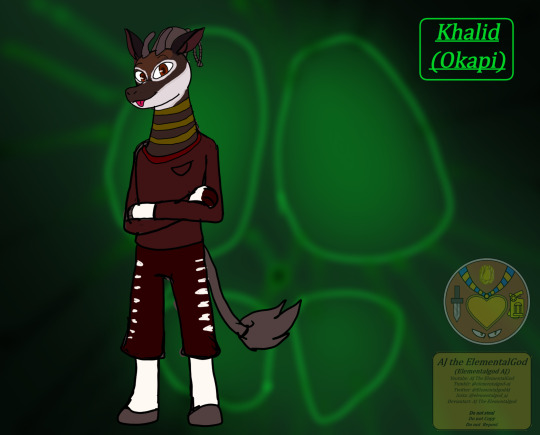

Mammal 10
Ungulates 2
Even toed Ungulates 2
Cervidae
Elker (Deer hybrid)
Antilocapridae
Alpine (Pronghorn)
Moschidae
Vlad (musk deer)
Tragulina
Mavis (Chevrotain/mouse deer)
Giraffidae
Khalid (Okapi)
Thelma (Giraffe)
#the watchful eye#watchful eye#my art#my ocs#my oc#elementalgod aj#aj the elementalgod#isle 0#toonverse oc#o'kong family#neo demons#anthro allies#earthdemons#Ungulates#even toed ungulates#Deer#pronghorn#musk deer#chevrotain#mouse deer#okapi#giraffe#mammals
1 note
·
View note